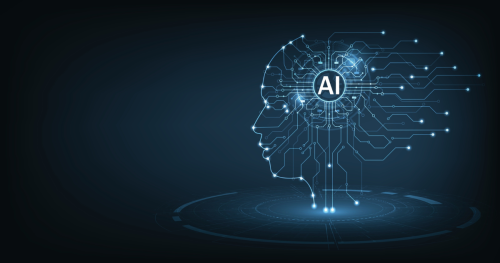 The guidelines published by the USPTO provide initial clarification
The guidelines published by the USPTO provide initial clarification
Inventorship Guidance for AI-Assisted Inventions (the “Guidance”) was published by the United States Patent and Trademark Office (“USPTO”) in February 2024.
The objective of the Guidance is to foster and protect investments in innovations made possible through the use of artificial intelligence (AI) and inform the public and USPTO employees about the patentability of AI-assisted inventions.[1]
The Guidance explicitly cites U.S. patent case-law (including the well-known DALBUS case) and, accordingly, states that in principle an AI system cannot be recognized as inventor, as only a human being can be considered to fill that role. However, the Guidance also clarifies that AI-assisted inventions are not categorically unpatentable. The use of an AI system by an individual does not in itself preclude that individual from being eligible to be recognized as an inventor if they have contributed significantly to the development of the invention. For this purpose, the Guidance sets forth instructions that USPTO examiners and applicants may use to determine whether an inventor can be named in a patent or patent application for an invention created by a human with the assistance of one or more AI systems.
In defining what constitutes a significant contribution from a human being, the USPTO Guidance refers to U.S. case law (in particular to the Pannu case, Pannu v. Iolab Corp.[2]) and provides that in the case of an invention made by more than one inventor, “each inventor must: ‘(1) contribute in some significant manner to the conception or reduction to practice of the invention, (2) make a contribution to the claimed invention that is not insignificant in quality, when that contribution is measured against the dimension of the full invention, and (3) do more than merely explain to the real inventors well-known concepts and/or the current state of the art.” These principles are cumulative, meaning that failure to meet any one of them precludes that person from being named as the inventor, and their application must be considered on a claim-by-claim and case-by-case basis.
After reporting these general principles derived from U.S. case-law, the Guidance offers further guiding principles specifically addressing inventions made using AI systems. The USPTO first concedes that determining whether a natural person’s contribution to an AI-assisted invention is significant may be difficult, as there is no clear-cut line. It then provides the following non-exhaustive list of guiding principles:
- A natural person’s use of an AI system to create an AI-assisted invention does not negate the person’s contributions as an inventor. The natural person can be listed as the inventor or joint inventor if the natural person contributes significantly to the AI-assisted invention.
- Merely recognizing a problem or having a general goal or research plan to pursue does not rise to the level of conception. A natural person who only presents a problem to an AI system may not be a proper inventor or joint inventor of an invention drawn from the output of the AI system. However, a significant contribution might consist of the way the person constructed the prompt in view of a specific problem to elicit a particular solution from an AI system.
- Reducing an invention to practice alone is not a significant contribution that rises to the level of inventorship. Therefore, a natural person who merely recognizes and appreciates the output of an AI system as an invention, particularly when the properties and utility of the output are apparent to those of an ordinary skill level, is not necessarily an inventor. However, a person who takes the output of an AI system and makes a significant contribution to the output to create an invention may be a proper inventor. Alternatively, in certain situations, a person who conducts a successful experiment using AI system output could demonstrate that the person made a significant contribution to the invention, even if that person is unable to establish conception until the invention has been reduced to practice.
- A natural person who develops an essential building block underlying the claimed invention may be considered to have made a significant contribution to the conception of the claimed invention, even though the person was not present for or a participant in each activity that led to the conception of the claimed invention. In some situations, the natural person(s) who designs, builds, or trains an AI system in view of a specific problem to elicit a particular solution may be an inventor when the designing, building, or training of the AI system is a significant contribution to the invention created with the AI system.
- Maintaining intellectual dominance over an AI system does not, on its own, make a person an inventor of any inventions created using that AI system. Therefore, simply owning or overseeing an AI system that is used in the creation of an invention without making a significant contribution to the conception of the invention does not make that person an inventor.
Overall, the Guidance seems to align with U.S. patent case-law while also providing useful practical indications for patent examiners and applicants. The USPTO has announced that it is open to comments from the public regarding the text of the Guidance and therefore further amendments may be expected.
[1] The full text of the Guidance is available at this link.
[2] 155 F.3d 1344, 1351 (Fed. Cir. 1998).


